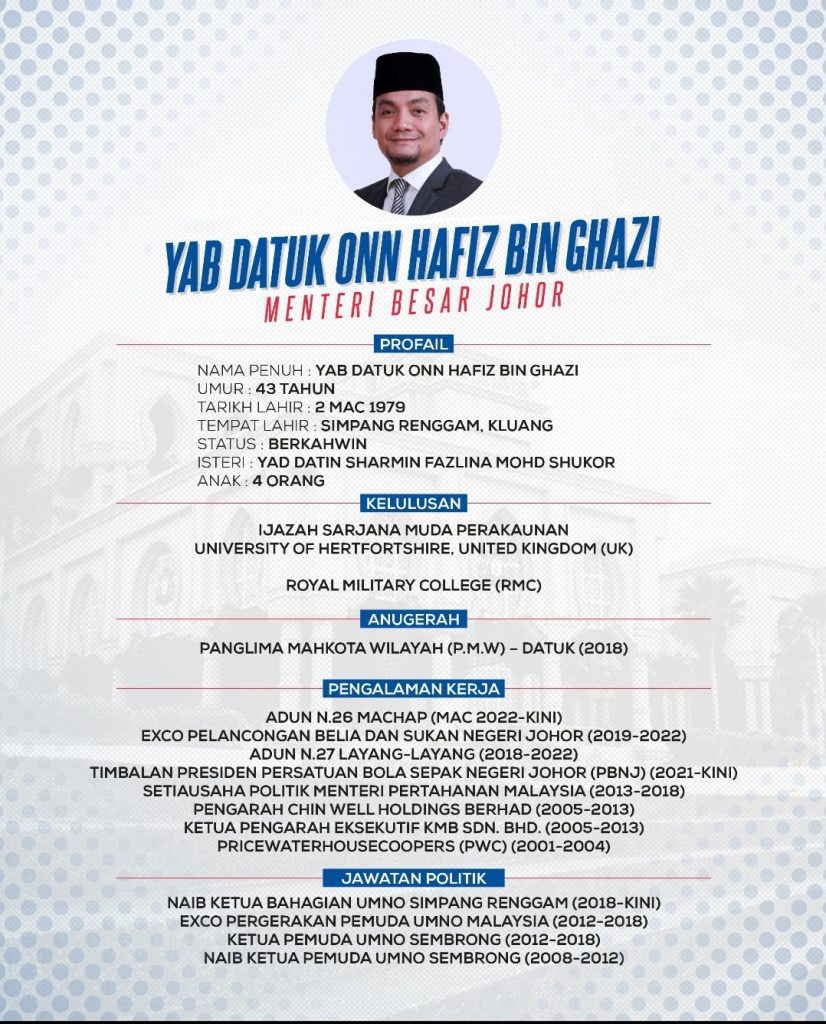Malaysia can’t afford to have advanced manufacturing goals derailed by trade wars, sanctions
The United States and China are locked in an intensifying race for technological dominance and the minerals needed to produce them. Last December, the US intensified its crackdown on Chinese semiconductors, imposing sweeping export restrictions on 140 companies and curtailing shipments of advanced memory chips and chipmaking tools. China retaliated by expanding its US export ban on minerals, such as gallium, germanium, and antimony – key inputs for semiconductors and military use technologies.
Trump 2.0 complicates further this outlook, as his administration is expected to intensify disruption to global trade norms, coupled with the influence of ideologically driven “China hawks” among his executive picks, who increasingly look to upend American dependence on Chinese-backed mineral supply chains.
The Trump administration’s pursuit of alternate mineral sources – evident in its interests in Greenland and Ukraine – signals an expanding front in geoeconomic confrontation. In March, he also issued an executive order to provide financing, loans and other investment support for domestically process critical minerals and rare-earth elements (REE).
These shifts should raise concerns that could threaten Malaysia’s strategic long-term ambitions in advanced manufacturing in the green and tech sectors.
For instance, an aggressively hawkish US administration could threaten secondary sanctions affecting third-party supply chains. Consequently, China’s dominance in REE processing might present risks to US-led investments in Malaysia if value-added inputs are sourced from sanctioned third-party firms. Such a move further exposes the economy to heightened risks that could hobble Malaysia’s advanced manufacturing ambitions.
REE industrial strategy
Responding to these growing vulnerabilities, a key priority for Malaysia should be to outline a comprehensive and dynamic REE industrial strategy – that is, taking a proactive stance to develop its own REE reserves.
This would mitigate the potential impact of supply chain disruptions while enhancing Malaysia’s economic resilience, complexity and competitiveness in advanced manufacturing.
The global REE market alone is projected to grow from RM16 billion in 2024 to RM35 billion by 2032, driven both by technological advancements and geopolitical bifurcation. Malaysia, with its sizable domestic REE deposits and vast network of trade agreements and frameworks, stands to gain a foothold in an increasingly multipolar global economy. Yet, without a comprehensive REE mineral strategy, Malaysia risks underutilising its domestic potential and leaving downstream players exposed to the vagaries of US-China tit-for-tat disruptions.
But what should a mineral industrial strategy include? Initiatives to develop Malaysia’s abundant local REE ion-absorption clays (IAC) mineral reserves are a crucial starting point. Investments in refining, processing and component manufacturing could enhance Malaysia’s value proposition in global supply chains to cushion itself from more intense US-Sino economic competition. Coupled with Malaysia’s export moratorium of un-beneficiated REEs, global refiners seeking to mitigate supply chain risks might find synergies with Malaysian ambitions in the sector.
Simultaneously, Malaysia must implement a strategy that includes financial risk mitigation in mineral price fluctuations while fostering public-private partnerships to boost investor confidence. Collaborating with global refiners to co-establish refineries and offering investment incentives to private manufacturers will strengthen midstream and downstream development. Additionally, deeper multilateral engagement under the Asean Minerals Cooperation Action Plans, CPTPP and BRICS presents opportunities to unlock and monetise global REE potential, ensuring Malaysia’s long-term participation and relevance in the sector.
Of course, while the future of mineral development appears promising, problems persist. Chiefly, Malaysia’s fragmented REE landscape continues to hinder its high-tech goals. Despite being the world’s second-largest REE refiner (about 7% of global capacity), this largely originates from the Lynas Advanced Materials Plant (LAMP) in Gebeng, which processes imported Australian mineral rock-based REEs and oxides shipped to global customers.
Structural problems
Malaysia’s IAC-based REEs meanwhile require separate refining processes, which currently remains undersized, limiting the commercial utilisation of local REE deposits amid Malaysia’s export moratorium on unbeneficiated REEs. This creates a linkage gap that hampers Malaysia’s ability to leverage on and integrate fully its REE supply chain vertically from mine to magnet. A clear mineral industrial strategy must aim to bridge these gaps, with industrial integration foundational in moving up global value chains. Global partners can serve as a trusted peer in Malaysia’s long-term mineral development strategy, offering investment, industrial expertise and global market access.
However, overcoming these structural gaps in REE sector development is a tall order and requires a broad strategic approach to incorporate seamlessly local mines with refineries and downstream manufacturers. While IAC-REEs are less commercially viable because of their comparatively lower yields, their strategic value lies in its potential for heavy REEs, crucial for advanced technologies. This makes the case for establishing a public-private joint venture or alternatively, strategic partnerships with global refining giants, more compelling. This would not only address Malaysia’s technological gaps but also enhance its position as a pivotal global supplier amid a more bifurcated trade landscape.
Simultaneously, sustainability must remain central to these efforts, as mining and refining processes are often linked to major environmental risks. Coordination efforts between the Ministry of Natural Resources and Environmental Sustainability (NRES) and Ministry of Investment, Trade and Industry (MITI) are essential, along with university, state and private-sector engagement to address environmental and regulatory challenges. Fortunately, because of their relatively lower concentration, IAC-REE ores are significantly less hazardous and radioactive than rock-based REE, which could mitigate fears of a recurrence of the 1982 Bukit Merah catastrophe (from improper thorium disposal).
However, while the in-situ leaching method is often recommended over open-cast mining, this must be regulated actively and strictly. As while in-situ leaching is often touted as less invasive and deforesting, it still poses ecological risks to underground water bodies, soil degradation and introduces the risk of releasing hazardous chemicals during leaching.
Addressing environmental concerns
China’s experience offers valuable lessons, as its once largely unregulated and small-scale primary REE mining sector caused severe and lasting ecological damage, particularly from improper chemical waste disposal. This led to extensive government crackdown, resulting in the widespread shutdown of illegal mines, industry consolidation and stricter enforcement of environmental controls.
Initiatives, such as chemical recycling and e-waste reprocessing likewise, offer pathways to mitigate ecological harm while enhancing the sector’s appeal to global investors. A balanced strategy that integrates ecological sustainability with industrial expansion will be pivotal in ensuring Malaysia’s long-term ambitions. Further, as more nations look to develop their own mineral supply chains, such investment opportunities are both rare and strategic.
Malaysia must recognise that the window of opportunity to capitalise on its REE potential is narrowing, as nations in the region and beyond also seek to exploit the growing global demand. A well-executed REE strategy could solidify Malaysia’s domestic industries while positioning it as a strategic partner for nations looking to diversify their mineral sources.
As Malaysia enters a new era of geopolitical and technological competition, a moment of opportunity arises. By embracing a comprehensive mineral industrial strategy that aligns sustainability, industry and innovation, Malaysia can transform its REE reserves into a cornerstone of its global high-tech and advanced manufacturing ambitions.
Policymakers must act swiftly to ensure our position as a pivotal player in the green and tech economies of tomorrow, proving that even amid geopolitical uncertainties, Malaysia can rise above, leveraging on geopolitics as a tool to reshape its own capabilities.





